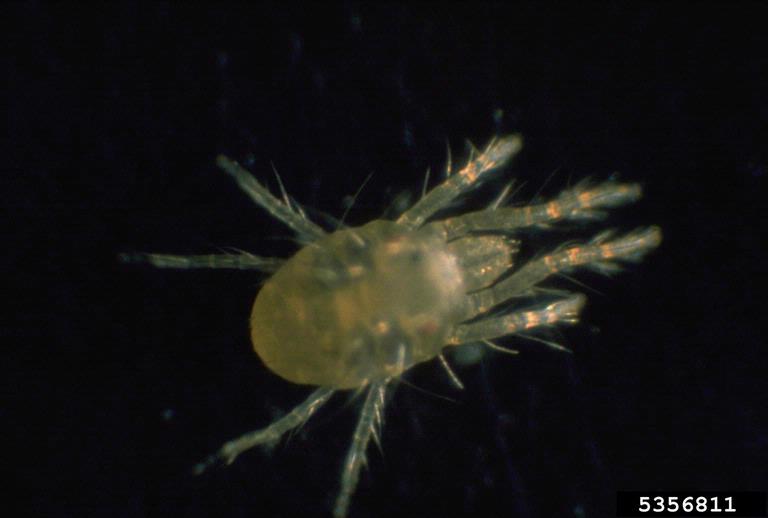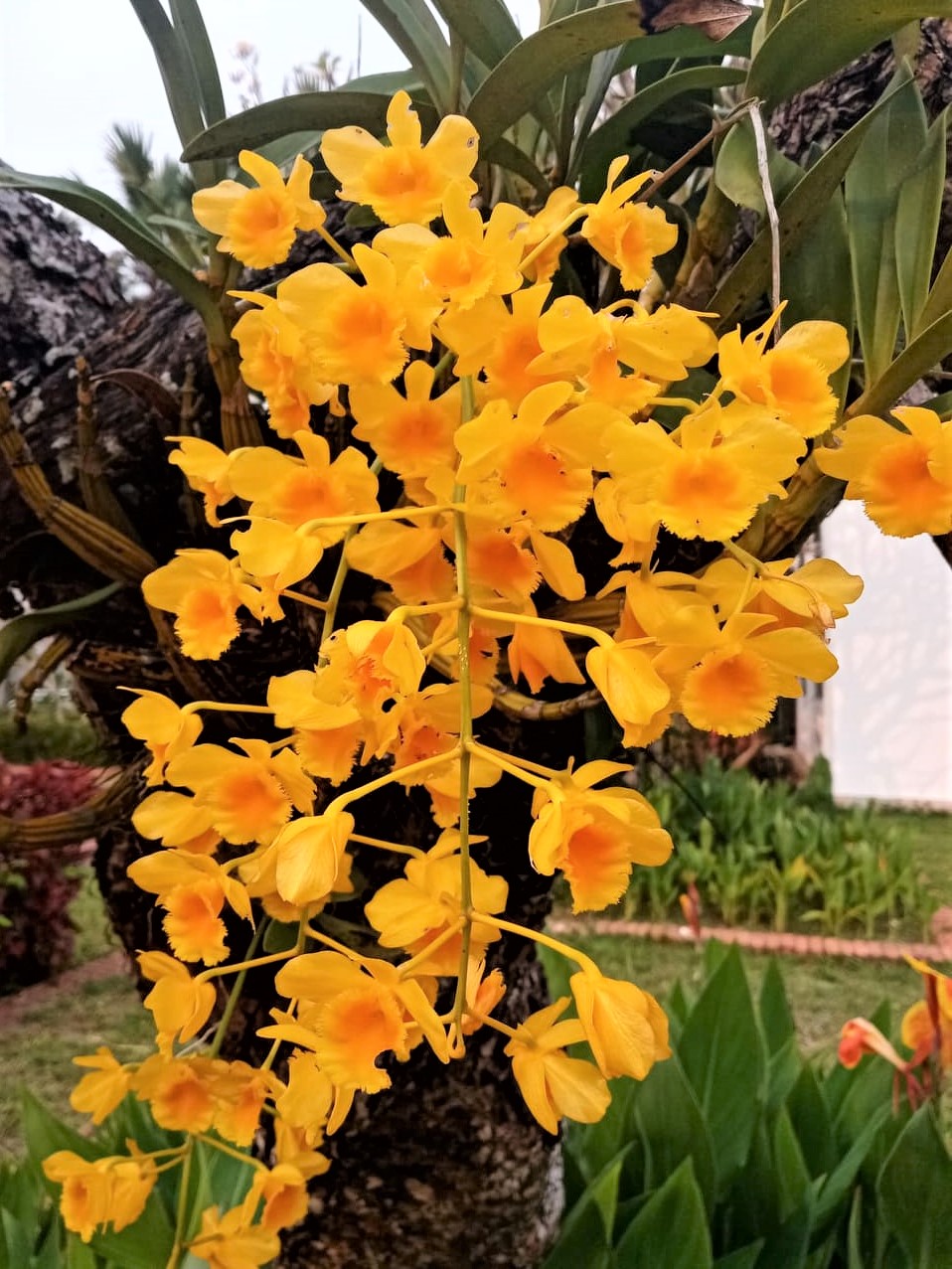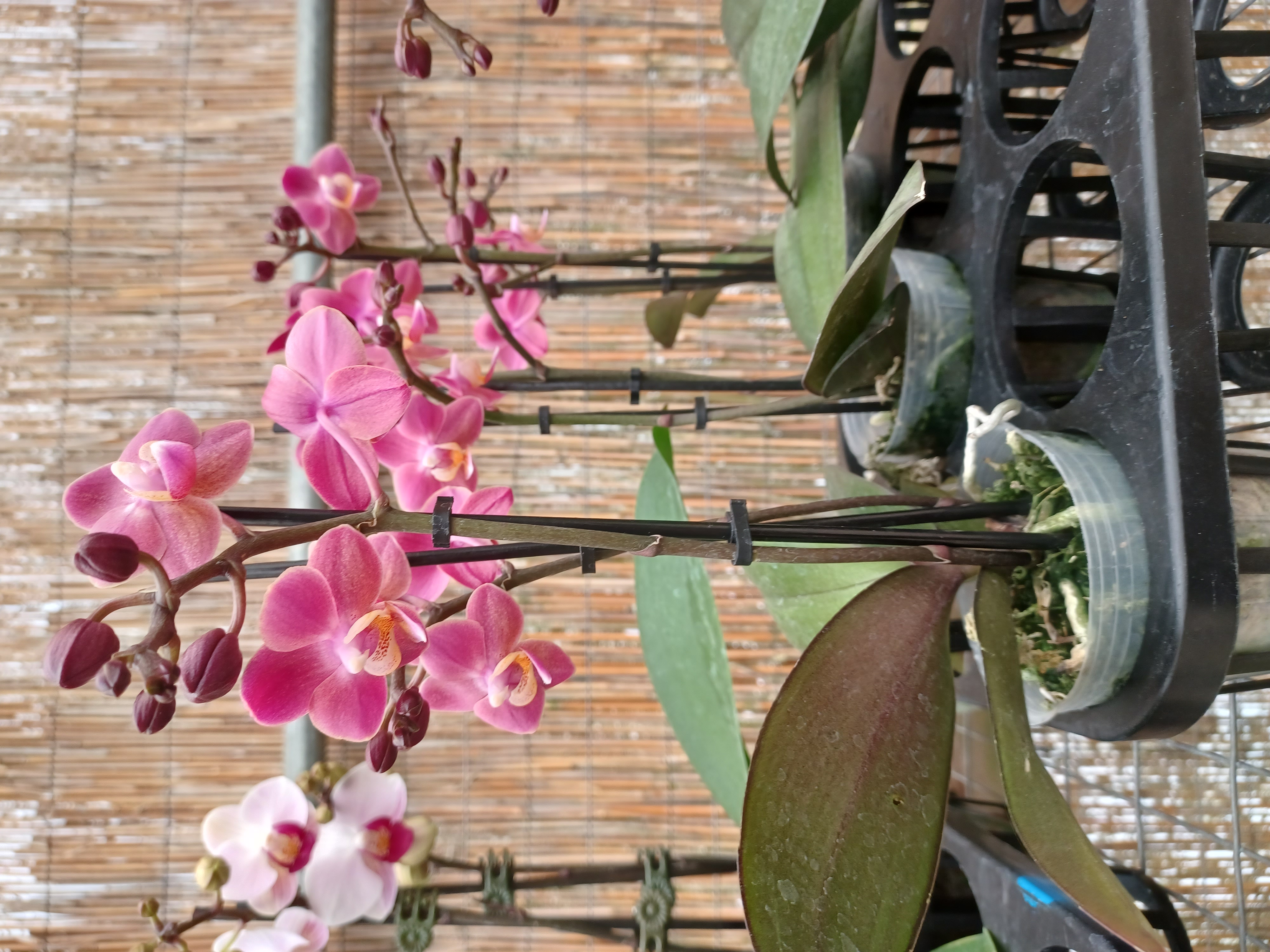- Home
- Pest Control
Orchid Pest Control
Let's talk about orchid pest control. Orchids are pretty hardy and beautiful plants that are prized for their exotic and elegant appearance. But just like any other plant, orchids are susceptible to a variety of pests that can cause serious damage if not dealt with promptly.
So, what are the most common orchid pests, and how do you treat and prevent them? Here are some vital details you should know about.
Scale
 United States Collection of Scale Insects Photographs, USDA Agricultural Research Service, Bugwood.org
United States Collection of Scale Insects Photographs, USDA Agricultural Research Service, Bugwood.orgScale insects look like small, raised bumps on the surface of leaves or stems. They feed on the sap, causing yellow spots or stunted growth. They often leave behind a sticky substance called honeydew, which attracts ants.
To remove scale insects from your orchids, use a soft brush to manually remove them from the plant. You can also use an insecticidal soap or an alcohol-based spray to kill the insects. Be sure to avoid harming beneficial insects or damaging your orchid plants.
Spider Mites Orchid Pest Control
 Photo: Eugene E Nelson bugwood.org
Photo: Eugene E Nelson bugwood.orgSpider mites are tiny, spider-like pests that are difficult to see without a magnifying glass. They spin webs on the undersides of leaves and cause extensive damage by sucking sap from the plant. You may notice that the leaves become stippled, dry, and eventually fall off.
To treat spider mites on orchids, start by isolating the infested plant and cutting off any infected leaves or stems. Then, spray the plant with a solution of soapy water or neem oil, which suffocates the pests. You can also introduce predatory insects like ladybugs to your orchid collection to help control spider mites.
Mealybugs
 Photo by Allesandra Rung, scale insects,USDA, APHIS PPQ, bugwood.org
Photo by Allesandra Rung, scale insects,USDA, APHIS PPQ, bugwood.orgMealybugs are common orchid pests that resemble small, cottony masses. They are often found on the roots, leaves, and stems of orchids and can cause leaf drop, stunted growth, and damage to the flowers.
When dealing with mealybug orchid pest control, start by removing any affected leaves or stems. Then, use a cotton swab dipped in rubbing alcohol to kill the pests. Repeat the process until all visible mealybugs are removed, and prevent re-infestation by regularly inspecting your collection.
Thrips
Thrips are tiny, slender insects that can cause damage to orchid flowers by sucking on them. They cause streaks or streaky marks on petals and sometimes fade the color of the flower.
To control thrips on orchids, use a pesticide that is safe for your plants, or use sticky traps that attract and capture the insects. Provide regular fertilization with high levels of Potassium to make the plant healthier and resistant to pests.
Aphids and Fungus Gnats
 Photo: Alton N.Sparks Jr., University of Georgia, Bugwood.org
Photo: Alton N.Sparks Jr., University of Georgia, Bugwood.orgAphids are small, soft-bodied insects that are about 1/8 inch in size. They can be found in a variety of colors, including green, black, red, and white. These pests feed on the sap of the plants and reproduce quickly, often leading to an infestation. In addition to causing damage to the plant, aphids also secrete a sticky substance known as honeydew, which can attract other pests, such as ants and fungal diseases.
Fungus gnats are small, dark-colored flies that are about 1/8 to 1/10 inch in size. They lay their eggs in the soil of the plant, and the larvae feed on the roots of the plants. This can lead to stunted growth and, in severe cases, death of the plant. Fungus gnats are attracted to damp soil and can be a particular problem for orchids that are grown in high humidity environments.
So, how do you control these pesky pests?
One of the best ways to control aphids is to spray the plants with a solution of soapy water. Mix a few drops of liquid dish soap with warm water and spray it on the affected areas. The soap will suffocate the aphids and cause them to fall off the plant. Repeat this process every few days until the aphids are gone.
Another way to control aphids is to introduce natural predators, such as ladybugs or lacewings, to your orchid collection. These insects will feed on the aphids and help control their population.
To control fungus gnats, it is essential to keep the potting medium of the orchids dry. Fungus gnats thrive in damp environments, so it’s important to let the potting medium dry out between waterings.
If you already have a fungus gnat infestation, you can use a soil drench with an insecticide containing pyrethrin or spinosad. These chemicals are safe to use on orchids but make sure to follow the instructions carefully.
Conclusion
Orchids are lovely and exotic plants that can add a touch of elegance to any living space. However, they are susceptible to a variety of pests that can cause damage to their flowers, leaves, and roots. With proper care, attention, and knowledge, you can keep your orchids safe from pests and enjoy their beauty for years to come. Keep your plants healthy by providing proper water, light, and nutrients and maintain its growth by providing regular care such as repotting and pruning damaged leaves. Be sure to consult your orchid supplier or advice from experienced gardeners for best practices.



